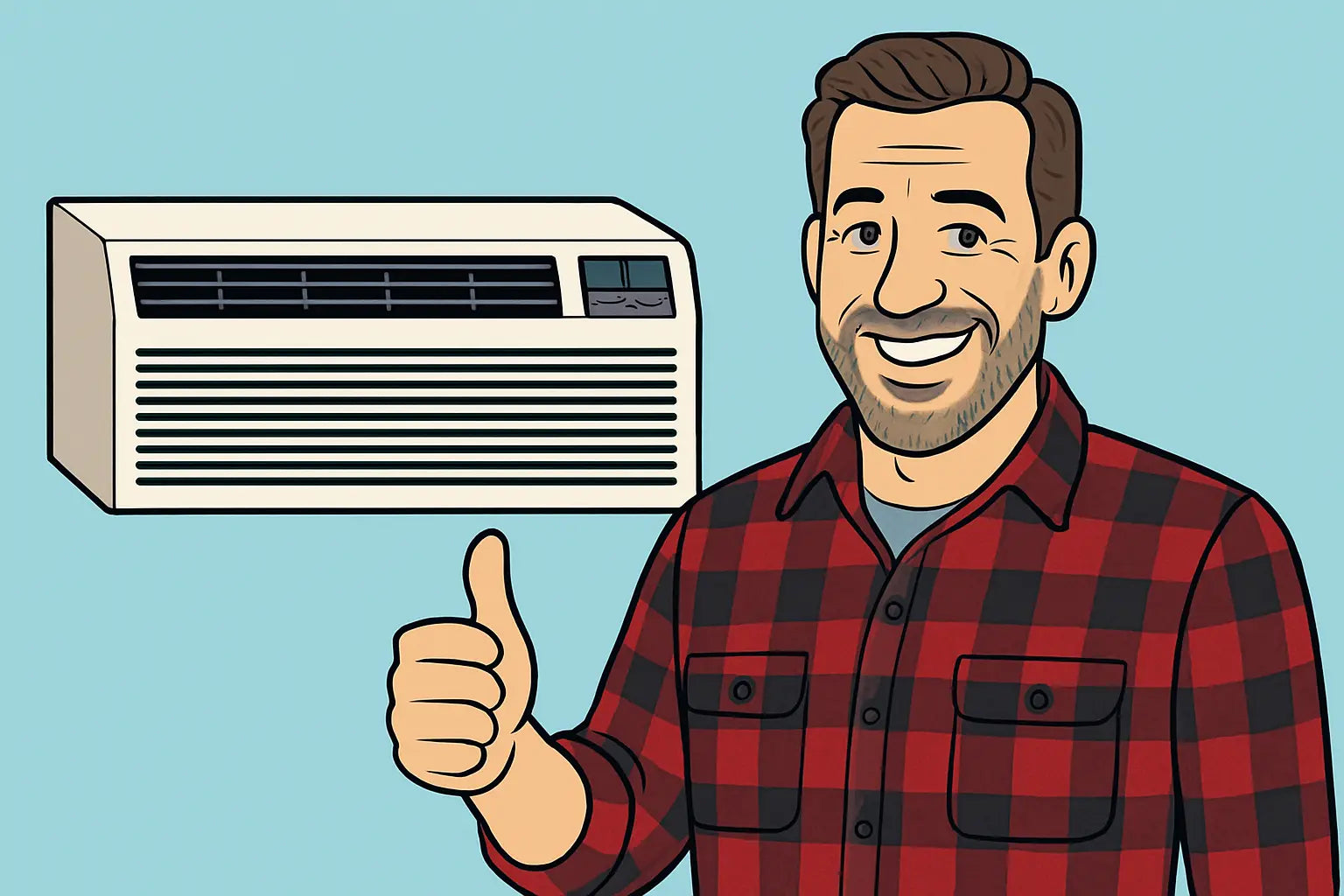Stop Wasting Energy, Start Feeling Comfortable 💡❄️🔥
Hey folks, Mike here. If you’re like me, nothing ruins a good day faster than a sky-high electric bill. Your Amana Distinctions 14,700 BTU PTAC with Heat Pump and 3.5 kW Electric Heat Backup is already efficient, but a few tweaks can make it even better.
Today, I’m going to share practical steps to optimize energy efficiency, so you stay comfortable year-round without overpaying.
Step 1: Keep Airflow Clean and Clear 💨
Airflow is the heart of efficiency. Restricted air makes the heat pump and electric backup work harder.
-
Clean Filters Regularly: Monthly checks and replacements prevent the system from overworking.
-
Unblock Vents: Furniture, drapes, or rugs can cut airflow. Make sure nothing obstructs intake or discharge vents.
-
Check Coils: Dirty coils reduce heat transfer. Clean them quarterly for best efficiency.
For detailed guidance, see this PTAC airflow and cleaning guide.
Step 2: Use Smart Thermostat Practices 🖲️
Your thermostat is your best friend for energy savings.
-
Set Reasonable Temperatures: For heating, 68°F is comfortable; for cooling, 75°F is often sufficient. Every degree warmer or cooler can spike energy use.
-
Programmable or Smart Controls: Consider a smart thermostat compatible with PTACs. You can schedule temp changes when rooms are unoccupied.
-
Avoid Frequent Fluctuations: Rapid changes force the system to cycle on and off more, wasting energy.
For homeowners wanting more tech tips, check Energy.gov’s heat pump efficiency advice.
Step 3: Optimize Backup Heat Use 🔥⚡
Electric backup is convenient but expensive.
-
Rely on the Heat Pump First: Only use electric heat when the temperature drops below the heat pump’s balance point.
-
Monitor Usage: If the backup kicks in too often, inspect airflow, coils, or refrigerant levels—inefficient heat pump operation drives up costs.
-
Consider a Timer or Limit Setting: Some PTACs allow you to limit backup use to prevent unnecessary energy consumption.
Step 4: Seal and Insulate Around the Unit 🏠
Your PTAC is efficient, but drafts and leaks can waste that energy.
-
Seal Wall Sleeve Edges: Use weatherproof caulk around the sleeve to prevent air leaks.
-
Insulate the Room: Proper insulation, curtains, or blinds help the PTAC maintain temperature with less effort.
-
Check for Gaps: Any cracks near the unit’s installation area reduce efficiency.
For a deeper dive on home energy savings, see Energy Star’s PTAC efficiency tips.
Step 5: Routine Maintenance = Efficiency 💡🛠️
A well-maintained PTAC is inherently more efficient.
-
Monthly: Check filters and airflow.
-
Quarterly: Clean coils and drain pans.
-
Annually: Professional inspection for refrigerant, compressor, and electric heat.
Reference: Amana PTAC manuals and maintenance guides.
Step 6: Seasonal Adjustments 🌞❄️
-
Summer: Ensure the cooling cycle is clean, set fan to auto, and keep outdoor vents clear.
-
Winter: Verify defrost cycles, check backup heat, and maintain coil cleanliness.
-
Shoulder Seasons: Moderate temperature settings reduce reliance on backup heat and save energy.
Pro Tips from Mike 💡
-
Combine smart thermostat scheduling with regular filter and coil maintenance.
-
Track your electric bills to see the effect of these adjustments.
-
Avoid cranking the unit up or down quickly—slow, steady changes are most efficient.
Outro: Stay Comfortable Without Breaking the Bank 💰❄️🔥
With these steps, your Amana Distinctions 14,700 BTU PTAC will run efficiently, keeping you warm in winter, cool in summer, and your energy bills lower.
Remember, it’s a combination of clean airflow, smart thermostat settings, proper backup heat use, sealing, and routine maintenance that keeps your PTAC performing at its peak. Follow this guide, and you’ll enjoy comfort and savings all year long.
Want to know more about PTAC components? Visit: Swap It, Upgrade It, Fix It.
Stay savvy, stay cozy,
—Mike, your cool HVAC neighbor







